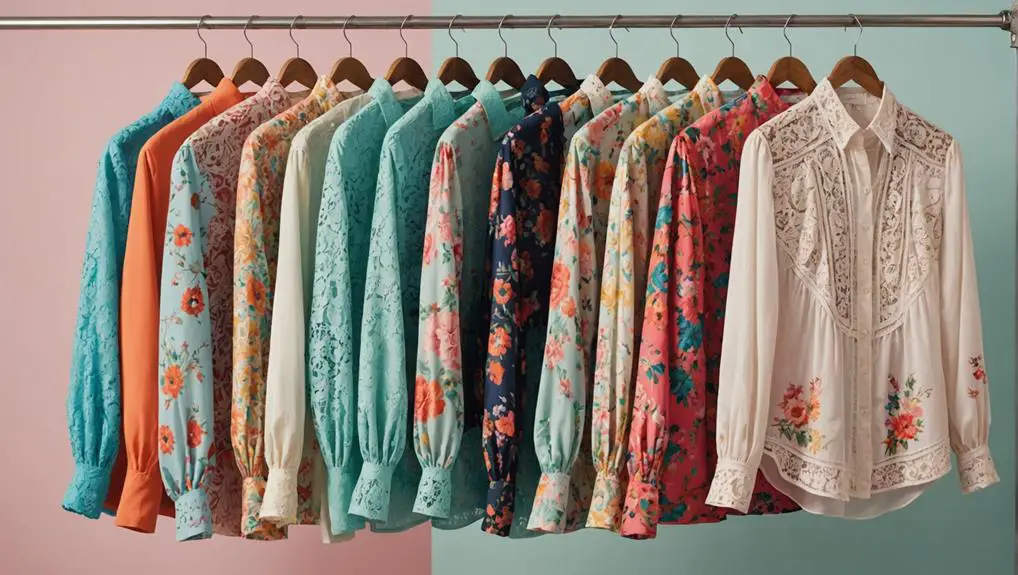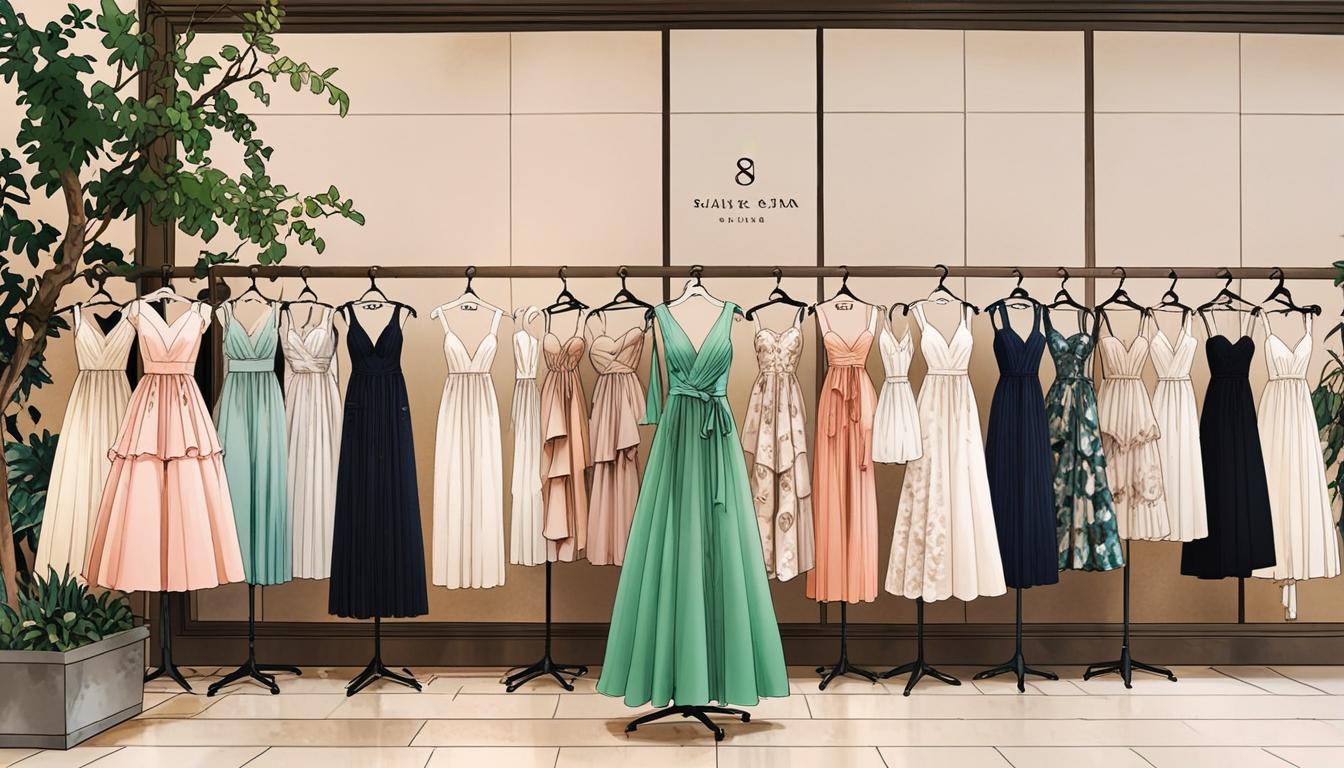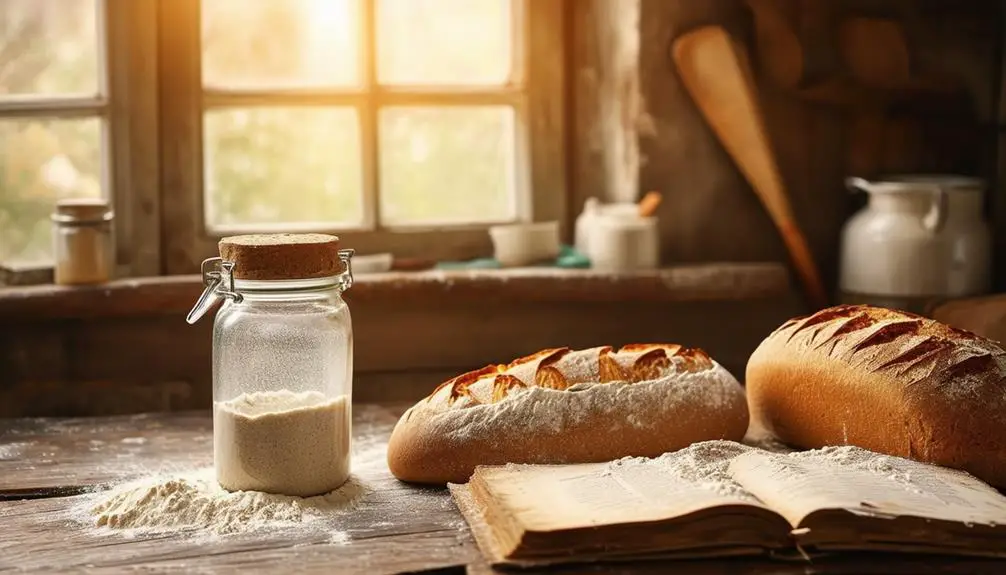In the 2010s, women's blouses flourished with playful silhouettes, luxurious fabrics, and vibrant prints. You'd find cold shoulder designs and draped styles making fashion statements while designers like Diane Von Furstenberg and Emilio Pucci pushed boundaries with their bold patterns. Lightweight materials, such as silk and cotton, became staples, often embellished with ruffles or embroidery. Sustainability grew in importance, influencing fabric choices and promoting eco-friendly practices. Thanks to social media, trends spread rapidly, allowing you to express your unique style effortlessly. There's so much more to explore about this transformative decade in fashion, and you won't want to miss it.
Notable Designers of the Decade

Throughout the 2010s, several designers greatly shaped the landscape of women's blouses, each bringing their unique flair to the fashion scene. Marc Jacobs captivated you with sheer silk and floral lace patterns, creating blouses that embodied both elegance and playfulness. Meanwhile, Diane Von Furstenberg revolutionized the wrap style with her Alexia wrap blouses, showcasing vibrant prints that celebrated femininity and confidence.
Gucci emerged as a powerhouse, offering luxurious silk blouses adorned with ruffle trims and the iconic pussy bow. This bold approach reflected the decade's embrace of expressive fashion. Emilio Pucci, known for his striking use of vibrant prints, kept you intrigued with his boat neck blouses, particularly the popular white and pink designs that maintained their appeal across the market.
Chloé introduced a modern twist with silk blouses featuring abstract prints and cold shoulder designs, catering to women seeking stylish sophistication. Valentino set a new standard for luxury with high-quality materials and intricate full-front lace designs, proving that craftsmanship could be both innovative and timeless. These designers not only influenced trends but also elevated women's blouses to new heights in the fashion world.
Signature Fabric Trends
In the vibrant tapestry of the 2010s fashion scene, signature fabric trends emerged as a defining element in women's blouses, transforming how you perceive style and comfort. As you explored your wardrobe, you likely noticed the rise of luxurious materials like silk, cotton, and wool, which provided both comfort and texture. Lightweight fabrics became the go-to choice, often adorned with embellishments such as lace, ruffles, and embroidery, enhancing their visual appeal.
Here are three standout trends:
- Unique Fabric Combinations: Designers like Ermanno Scervino and Marc Jacobs showcased blouses merging floral lace with sheer silk, embodying the decade's commitment to expressive fashion.
- Vibrant Prints: Names like Emilio Pucci led the charge with bold patterns, making a statement that echoed a shift toward more eye-catching designs.
- Eco-Friendly Materials: With sustainability on the rise, many brands began embracing eco-friendly materials, emphasizing ethical production methods that resonated with conscious consumers.
These trends not only redefined elegance but also highlighted a movement toward responsible fashion, allowing you to express your individuality while supporting ethical practices.
Popular Blouse Styles
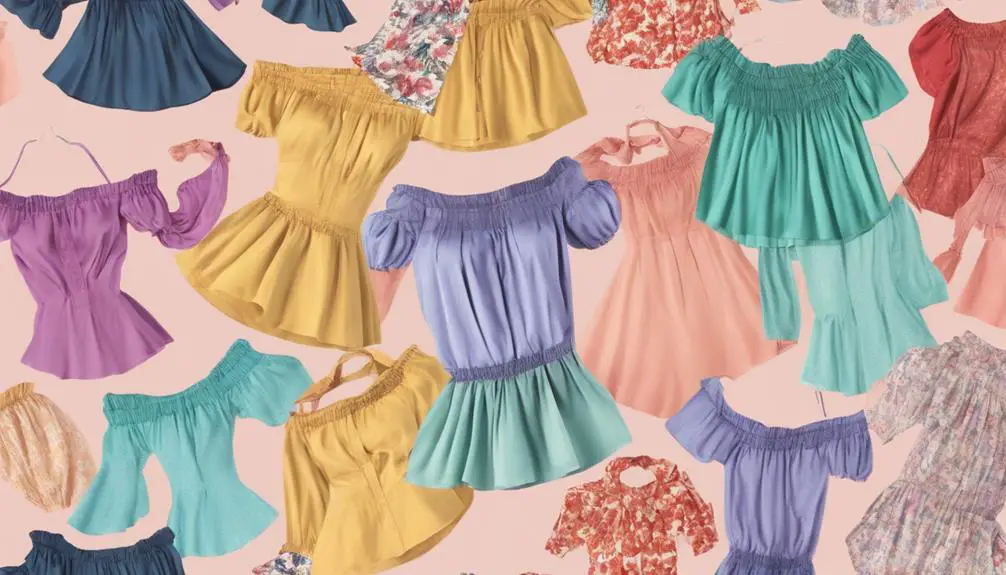
As the 2010s unfolded, popular blouse styles captured the spirit of a decade that celebrated both comfort and modernity. You'd find that cold shoulder designs and draped styles were everywhere, emphasizing modern silhouettes that combined comfortable elegance with a touch of sophistication. Iconic pieces, like Diane Von Furstenberg's Alexia wrap blouse, showcased flattering wrap cuts that became staples in women's wardrobes, often adorned with vibrant prints that caught the eye.
The decade also saw a rise in embellishments, with ruffles and embroidery adding visual interest to blouses, making them stand out in any outfit. Designers like Emilio Pucci and Marc Jacobs embraced expressive prints and patterns, signifying a bold approach to fashion that encouraged women to express their individuality.
Moreover, the increasing demand for sustainable fashion led many brands to prioritize eco-friendly materials in their designs, aligning style with ethical production practices. This shift not only catered to your aesthetic desires but also resonated with your values, allowing you to make fashion choices that are both chic and conscious. Overall, the popular blouse styles of the 2010s perfectly encapsulated a blend of creativity and responsibility.
Key Fashion Trends
With a vibrant fusion of styles and materials, the 2010s showcased key fashion trends that transformed women's blouses into statement pieces. You witnessed an exciting evolution in design, marked by a playful mix of textures and silhouettes. Cold shoulder designs and draped styles took center stage, allowing for more expressive layering, reminiscent of the bold fashion statements seen in vintage clothing trends. Bold prints, especially vibrant florals, became essential, with designers like Emilio Pucci and Roberto Cavalli pushing the boundaries of visual aesthetics.
Here are three standout trends from the decade:
- Wrap Cuts: These flattering silhouettes, exemplified by Diane Von Furstenberg's Alexia wrap blouse, offered versatility and style.
- Lightweight Fabrics: Materials like silk and cotton dominated, often enhanced with delicate lace, ruffles, or stunning embroidery, elevating the luxurious feel.
- Sustainability: A growing focus on eco-friendly practices influenced fabric choices, prompting designers to incorporate sustainable materials into their collections.
These trends not only defined a decade but also encouraged you to embrace bolder choices in your wardrobe, celebrating individuality and style.
Influence of Social Media
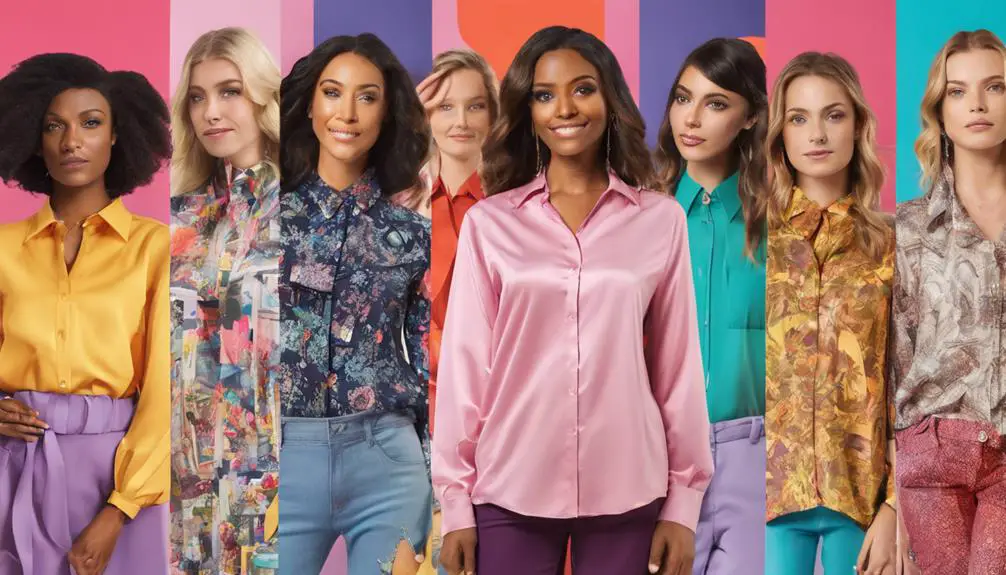
The explosion of digital connectivity in the 2010s transformed the fashion landscape, particularly in how women's blouses were marketed and consumed. Social media influencers became pivotal, leveraging platforms like Instagram to showcase their personal styles and set blouse trends. You likely noticed how figures like Chiara Ferragni and Leandra Medine shifted the focus from traditional models, making their outfit choices resonate deeply with consumer preferences.
Hashtags and online challenges on Instagram birthed viral trends, allowing styles such as cold shoulder and floral prints to skyrocket in popularity seemingly overnight. As you scrolled through your feed, user-generated content flourished, with everyday consumers sharing their blouse outfits, fostering a vibrant community. This engagement pushed fashion brands to adopt more inclusive marketing strategies, recognizing the power of real-life examples over curated images.
Moreover, the instantaneous feedback loop provided by social media meant that fashion brands could quickly adapt their blouse designs based on trending styles and consumer preferences. The 2010s proved that in the world of women's fashion, social media wasn't just a tool; it was a game-changer, shaping the very fabric of how blouses were perceived and sold.
Layering Techniques
Layering techniques in the 2010s revolutionized how women approached their blouses, turning them into versatile staples that could adapt to any occasion. Blouses became the foundation for creative outfit building, reflecting individual expression and a keen sense of style. You could mix lightweight materials like silk, cotton, and wool with various outerwear to create depth and dimension.
Here are three popular layering techniques to try:
- Sheer Pairing: Combine a sheer blouse with a statement jacket or cardigan. This not only enhances your look with contrasting textures but also adds a pop of color.
- Draped Styles: Layer a draped blouse over a fitted top or under structured outerwear. This technique enhances your silhouette while providing comfort and elegance.
- Oversized and Cropped Combinations: Wear oversized blouses over high-waisted bottoms or dresses. This contemporary approach keeps your outfit fresh and on-trend, allowing for versatility and sustainability in your wardrobe choices.
Statement Prints and Patterns
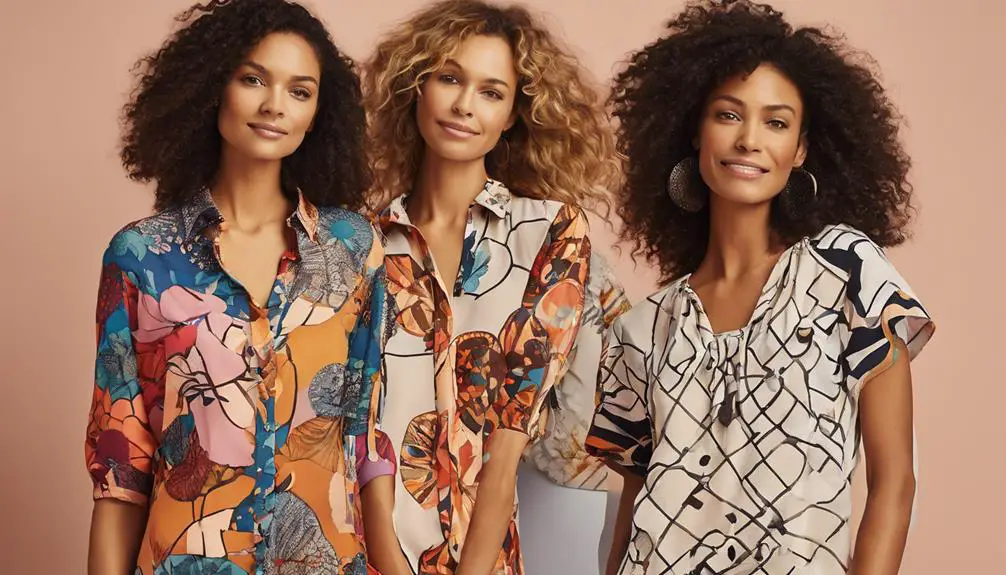
Embracing boldness, statement prints and patterns took center stage in women's blouses during the 2010s, transforming everyday attire into expressive canvases of individuality. Designers like Emilio Pucci and Diane Von Furstenberg championed vibrant floral designs and daring abstract prints, making blouses a focal point of self-expression. The decade saw a rise in the use of vivid colors and unique patterns, as brands like Marc Jacobs and Gucci infused ruffle trims into their creations, reflecting the demand for distinctive styles.
Cold shoulder and asymmetric cuts became popular, allowing you to showcase statement prints while adding a modern twist to classic silhouettes. These design elements not only enhanced visual appeal but also catered to the desire for uniqueness. As sustainability trends emerged, many designers opted for eco-friendly fabrics, proving that you can embrace bold, eye-catching designs without sacrificing environmental consciousness.
Layering techniques also gained traction, enabling you to mix and match blouses with various textures and styles for versatile outfits. This approach elevated the impact of statement prints, ensuring that your wardrobe remained fresh, dynamic, and reflective of your individuality throughout the decade.
Sustainability in Fashion
Fashion's landscape transformed dramatically in the 2010s, as a growing consciousness about sustainability reshaped consumer preferences and industry practices. The Rana Plaza collapse in 2013 was a pivotal moment, highlighting the ethical implications of fast fashion. In response, you saw brands like Gucci phase out fur and adopt eco-friendly materials, catering to an increasing consumer demand for sustainable options.
Here are three key trends you might notice:
- Clothing Rental: You likely explored rental services, offering stylish options without the commitment, reducing waste and promoting sustainability.
- Resale Markets: Thrift shopping and online resale platforms flourished, encouraging you to recycle your wardrobe while embracing unique fashion statements.
- Transparency in Production: Brands began to prioritize ethical production methods, showcasing their commitment to organic materials and responsible sourcing, in response to your demand for clarity in manufacturing.
As these initiatives gained momentum, they not only altered how you shop but also fostered a broader conversation about sustainability in fashion. You became more aware of the impact of your choices, driving the industry toward a more responsible future.
Blouse Versatility and Styling
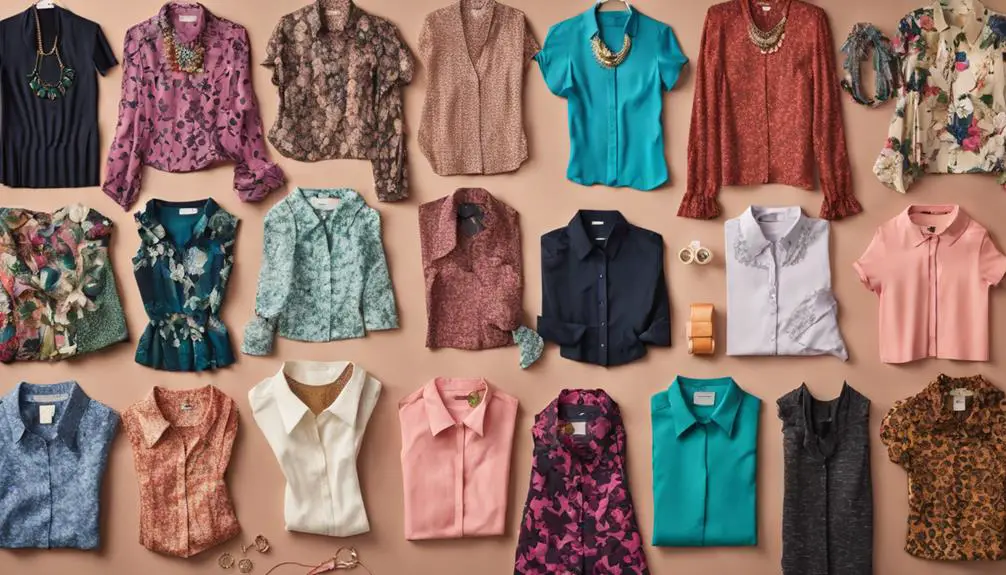
With a myriad of designs emerging throughout the 2010s, blouses became a cornerstone of versatile styling, effortlessly shifting from casual to formal settings. The rise of cold shoulder styles, draped cuts, and wrap blouses allowed you to express your personality while adapting to any occasion. Pairing blouses with high-waisted jeans instantly elevates your casual look, while tailored trousers transform them into formal attire for meetings or events.
Materials like silk and cotton contribute to the comfort and layering potential of blouses, making them perfect for shifting between seasons. Designers like Diane Von Furstenberg and Marc Jacobs introduced stylish details, such as lace embellishments and unique prints, enhancing the blouses' appeal as statement pieces. Layering blouses with outerwear or incorporating them into athleisure outfits reflects the evolving fashion landscape, merging comfort with high style.
Ultimately, the versatility of blouses lies in their ability to create diverse silhouettes. Whether styled with skirts, jeans, or tailored trousers, blouses allow you to navigate your wardrobe effortlessly, proving they're essential in any fashion-savvy woman's collection. Embrace their adaptability and redefine your styling game!
Frequently Asked Questions
What Shirts Were Popular in the 2010s?
In the 2010s, you'd notice a rise in versatile shirts featuring bold prints, relaxed fits, and unique cuts. Styles like the classic button-up and trendy cold shoulders dominated, blending comfort with contemporary flair effortlessly.
What Were the Popular Clothing Brands in the 2010s?
In the 2010s, you'll notice brands like Gucci and Zara dominating the scene. Luxury meets affordability as fast fashion rises, while social media fuels niche labels, making trendy, sustainable options more accessible than ever.
What Year Were Blouses Popular?
Blouses surged in popularity around 2013, blending comfort with style. You'll notice how designs evolved, embracing trends like cold shoulders and vintage prints, reflecting a shift toward casual yet chic fashion in everyday wardrobes.
